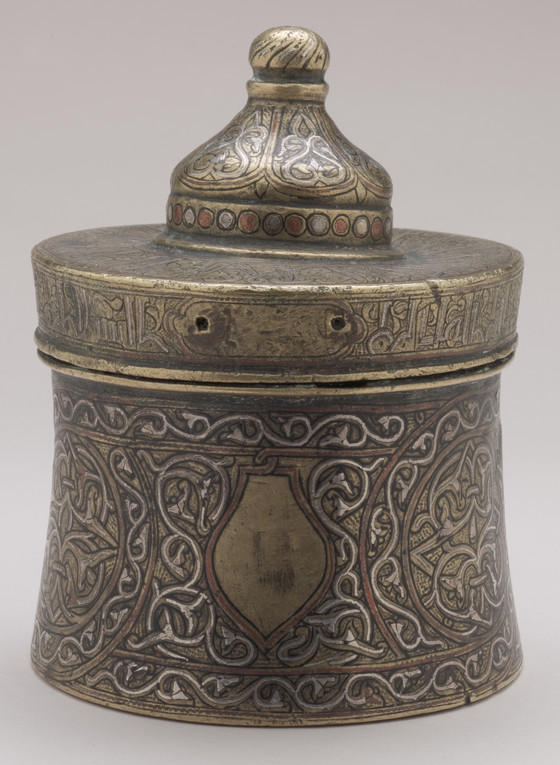Inkwell


Please log in to add this item to your gallery.
View comments
No comments have been posted yet.
Add a comment
Please log in to add comments.
Please log in to add tags.
* Nearly 20,000 images of artworks the museum believes to be in the public domain are available to download on this site.
Other images may be protected by copyright and other intellectual property rights.
By using any of these images you agree to LACMA's Terms of Use.
Inkwell
Iran or Afghanistan, late 12th-early 13th century
Metal
Bronze, cast, incised and inlaid with copper and silver
a) Lid height: 2 1/2 in. (6.35 cm); a) Lid diameter: 3 1/2 in. (8.89 cm); b) Base height: 2 3/4 in. (6.99 cm); b) Base diameter: 3 5/8 in. (9.21 cm); Overall height: 5 in. (12.7 cm); Overall diameter: 3 5/8 in. (9.21 cm)
Purchased with funds provided by the Joan Palevsky Bequest (M.2006.138.2a-b)
Not currently on public view


